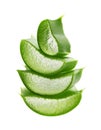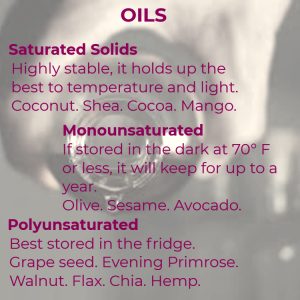Spring Skin Care
Temperatures continue to yo-yo but officially, it’s Spring. As noted in my winter skin care article, despite the snow and rain, the amount of moisture in the air is reduced by the frigid temperatures. Add to that heated indoor space, our skin needs help holding on to every bit of moisture it can get.
But in Spring, as more moisture becomes available in the air and indoor heat is turned down or off, winter’s heavy oils and creams are no longer needed. It’s time to break out skin’s springwear.
The elements of care are basically the same but the tools for exfoliating, toning, moisturizing, and protecting the skin are different. Let’s look at each one.
Exfoliate
Literally meaning “shed from a surface in scales”, this process removes dead, dry, or dying skin cells. It helps the skin’s renewal process by exposing new skin cells. This
- reduces the appearance of wrinkles
- reduces skin discoloration
- improves skin texture and appearance
- improves the absorption of skin treatments
There are three basic types of exfoliant:
| ACIDS | ENZYMES | MECHANICAL |
| Glycolic | Bromelain (pineapple) | Oatmeal/Oats |
| Lactic | Papain (papaya) | Rice bran |
| Salicylic | Protease (Bacillus microbes) |
Honey – A Sweet Defender
Honey has been used since ancient times for more than satisfying sweet tooths. A natural antimicrobial, it’s still used for wound healing. It is also a natural exfoliant. According to How Things Work, honey is
- an antiseptic , preventing the growth of unwanted bacteria and viruses and fungi
- an antioxidant, to slow the deterioration of cells
- an anti-inflammatory, reducing swelling caused in response to injury or insult to the body
- a humectant, preserving skin’s moisture
Vogue recommends a lymph massage featuring honey that’s apparently guaranteed to make your skin glow. Or skip the massage and try a simple honey-salt recipe which doubles as a mask.
Twice weekly should be sufficient for most skin types. Of course, you’ll have to find what works best for your skin – by frequency and by ingredient(s).
Of course, there are a great many combination products which can be purchased.
Tone
Toning serves multiple purposes. It:
- tightens pores, smoothing skin’s appearance and minimizing wrinkles
- narrows the gaps between cells, leaving less room for impurities to get under your skin
- makes pores appear smaller
- discourages the growth of ingrown hairs
- restores skin’s acid/alkaline balance which cleansers can upset. It can dry skin, making the body compensate by generating more oil. The result is your face shining like new money – not in a good way.
As a skin refresher, toner can eliminate dirt and excess oil when water isn’t available. While many formulas contain alcohol, witch hazel offers the same benefit plus provides a moisturizing effect.
Witch Hazel, A Super Toner
Distillations from this shrub (Hamamelis virginiana) have a long history as a skin protectant and wound cleanser. I personally use it in the summer as a cooling spritz, combining one part to 2-3 parts water and sometimes a few drops of essential oil.
For the true DIYer, it can be grown in the Mid-Atlantic. According to Gardening Know How, it is a low-maintenance shrub which, left to itself, can soar up to 30 feet high and achieve a width of 15 feet. It makes a great border and is often grown for its pretty yellow flowers and fragrance which can brighten a winter landscape.
If growing the shrub and distilling the plant is too much, you can buy it; preferably alcohol-free, like Thayer’s Witch Hazel with Rose Petal.
Other toners may provide the added benefit of UV-protecting minerals and skin-friendly foods.
Moisturize, Lightly
Spring doesn’t fill the air with so much moisture that your skin still doesn’t need a little assistance. Instead of scooping up heavy creams, balms, or ointments, your skin’s springwear ensemble consists of:
Serum is basically a concentration of antioxidants, peptides (collagen), and other nurturing ingredients which are suspended in water. The water quickly evaporates, releasing the active ingredients. These are found in many products featuring organic plants and minerals.
Lotion, a light formula, will create a moisture barrier without building up an unneeded layer of lipids (I could say “fats” but somehow lipids sounds better).
Hydrating gels are water-based products that boost the skin’s water content. Especially if you have dry skin, you’ll want to apply a good hydrator before applying a moisturizer. One waters the skin, the other holds the water in.
Don’t Forget to Cleanse
The hydrating or creamy cleansers designed to create a defensive barrier against the harshness of winter will create a happy breeding ground for blackheads in the spring.
So put away the lipid-rich cleansers and allow your skin to generate its own lipids.
Avoid Being Done in by the Sun
The gentle temperatures of Spring can make us forget those ultraviolet rays are still bombarding us. Spending more time outdoors requires regular sun protection – in any season – to delay skin aging and, more critically, lower the risk of skin cancers.
Sun protection factor (SPF) is the measure of time a product protects skin from UV. Dr. Binh Ngo, a dermatologist at USC, recommends using products with at least 30 SPF, even if just driving or riding in a car for an extended period.

Aloe Vera is one UV-protector that you can grow at home. Long used in traditional medicine for a variety of conditions inside and out, researchers are just learning how it works to not only shield skin from sun damage but to also repair it.
Most sources recommend reapplying a skin protectant every two hours.
Minerals supply the added benefit of antioxidants that reduce inflammation from pollen and other environmental hazards.
Skin-protective Clothing
Although you may look forward to minimizing the amount of clothing worn in these warmer months, you may want to keep your shirt on. Literally. Sunlight, pollen, and environmental toxins take a toll on our largest organ.
If you’re going to be outdoors, in a vehicle, or indoors in a multi-window room, protect your skin with SPF clothing; choose from 30 SPF up to 50 SPF. Wear light colors which will reflect heat and keep your body from overheating.
Wear a hat to shade your scalp, face, ears, and neck.
Nourish Skin From The Inside
Spring is a traditional time for detoxing. There are many sites that go on and on about spring detox diets and smoothies without clearly stating how and why the body goes through a detox.
But traditionally, winter months have traditionally meant less exercise and access to fresh foods. Detoxifiying is said to be a way to give the body a boost as it shakes off the lethargy of winter for the vibrancy of spring.
Skin in any season can benefit from a regular intake of water, fiber, and plants. Produce that is locally grown hydroponically makes it possible to have access to fresh produce that hasn’t spent a week in a cargo ship/plane/truck. (And of course, you can save money and enjoy year-round crops by growing a garden in your basement.)
Vitamin B3, biotin, and zinc are said to help skin thrive in the face of what may be spring’s greatest challenge: pollen.
Hello Allergies!
Did you see the vid of the pollen storm from a falling tree? Yes, ‘tis the season of irritated, red eyes and offended sinuses. Pollen from the awakening earth (trees, grass) is a vital part of Spring. But it can take a toll on skin.
Pollen causes the skin to become inflamed, causing wrinkles to appear deeper and pouches to form below the eyes. If you’re allergy prone – and ‘they’ say the Mid-Atlantic is a great place to develop an allergy – consider growing your allergy relief.
Nettle (Urtica dioica)
Also known as stinging nettle, this plant has a long history in folk medicine as an antihistamine and antimicrobial. Research backs up that lore and looks at additional uses for this plant that’s often dismissed as an unwanted weed or a menace to hikers.
Quercetin
This plant compound (polyphenol/flavoid) is another commonly found ingredient in herbal antihistamine products. Researchers have found that besides blocking histamine action, it also acts as an immune booster, viral killer, antioxidant, anti-diabetic, and cardiovascular booster. It’s often sold as a supplement, but you can grow your own supply.
Quercetin is one of many beneficial compounds found in onions, dark red or blue fruits, grapefruit, apples, and okra. For a fuller list, check out Livestrong’s Foods with the Highest Amounts of Quercetin.
Seed and Grain Oils
The 2019 article Natural Oils for Skin-Barrier Repair: Ancient Compounds Now Backed by Modern Science reports on findings of researchers on the anti-inflammatory, antimicrobial, antioxidant, and anti-itch properties of sunflower, olive, coconut, jojoba, oat, and argan oils. These can stimulate the production of ceramide, a fat molecule key to providing skin with a full, smooth appearance.
DIY Body OIls

Supplies for making your own skin care products are easier than ever to purchase. A few pointers:
- Herbs can be fresh or dried. Be very sure fresh herbs are very dry to the touch, excess moisture can cause your creation to spoil.
- If using fresh herbs or flowers, pick them on dry days or just after the morning dew has evaporated. To further wick away moisture, place plants in a single layer in a colander or open weave basket for at least 8 hours
- If using roots, wash carefully and well then air dry on towels at least 8 hours. They should feel thoroughly dry to the touch. Cut into pieces when dried.
- Never fill a jar to the top. Because oil expands in warm weather, you’ll want to leave room for that to happen.
Oil Infusion Methods
There are a few ways to draw the goodness from a plant into an oil.
Sun Infusion
This is a slow process, placing jars where they can soak up the strength of the sun for several hours a day. This can take a couple of weeks. But it’s cost effective – sunlight is still free – and has a relatively low maintenance process.
Heat Infusion
This is the quickest method, done in a matter of hours. Use your oven on a low setting or use a dedicated crockpot. The ideal temperature range is between 120 and 130° F.
This method requires a little more labor. After the oil has been infused, pour it through a fine sieve or cheescloth to completely strain out all of the plant matter. Then pour the oil into jars or bottles (never to the top!) and lid.
Cold Infusion
Slower than sunshine, this method is very low maintenance. Put lidded jars on a shelf in a convenient out-of-the-way place (pantry, basement, spare room) and leave them for 6 weeks. Give them an occasional shake and eyeball them for signs of mold.
Spring Skin Care
Taking good care of your skin is a natural part of self-care for body and soul. What’s your Spring care regimen? Whichever you choose, incorporating the four components – exfoliate, tone, moisturize, and cleanse – will help you look your best as you enjoy another Mid-Atlantic Spring.